Computex`2004: Mobo Foxconn
Computex`2004: Asustek's Expo Stand
At the expo stand of Asus, the central place is taken by a car engine with nitrogen protoxide injection.
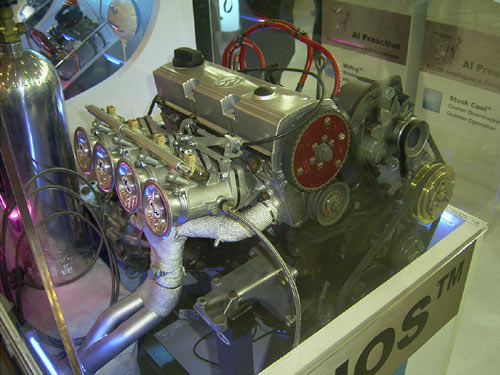
In fact, this doesn't mean the company started manufacturing cars for street racing. Actually, the audience were shown a new proprietary technology - AI NOS (tm), aimed at boosting system performance. Despite the nice name, AI NOS is in fact just another implementation of "dynamic overclocking". That is, as more load is applied to the processor, the motherboard overclocks the processor (and raises the memory operating frequency). The first board that supports this feature is P5GD2 Premium.
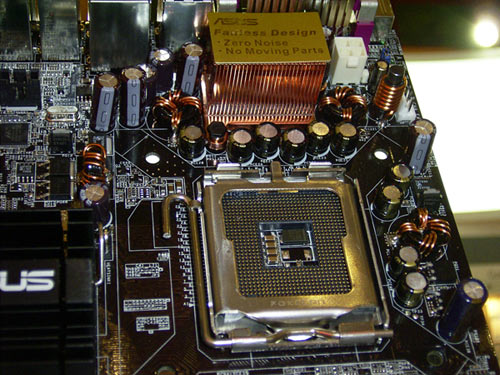
ASUS P5GD2 Premium
Here are the brief specifications:
- Support for Socket LGA775 (800 FSB) processors
- Chipset: Intel 915P+ICH6R
- Memory: dual-channel DDR2-533 (MAX 4Gb)
- RAID: 8 channels for SerialATA (RAID 0,1, 0+1)
- LAN: two Gigabit connections
- USB2.0: 8 ports
- Firewire-800: 2 ports
- Firewire: 1 port
- PCI x16 Express Graphics: 1 slot
- PCI x1 Express: 3 slots
- "regular" PCI: 2 slots
- 8-channel integrated audio
Note separately that the company offers the new "Premium" line in its assortment. So far, Asus boards have ranked as "-X" and "Deluxe". So, by the set of features and supported technologies (as well as package bundles) boards of the "Premium" series will surpass the "Deluxe"!
For example: the P5GD2 Deluxe board offers only one Gigabit controller, lacks support for Firewire-800. Besides, it offers scarcer package bundle (as compared to the "Premium" :)
The specific feature of the P5GD2 line is the cooling system for the power supply module (the technology acquired the name Asus Stack Cool).
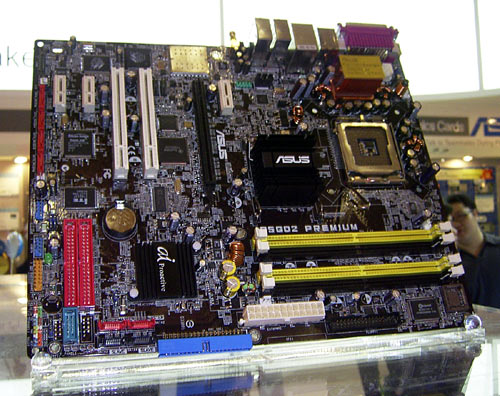
The system is fully noiseless, since it lacks a fan (evidently, air flow from the processor cooler is used). Besides P5GD2, the Stack Cool is installed on the following boards:
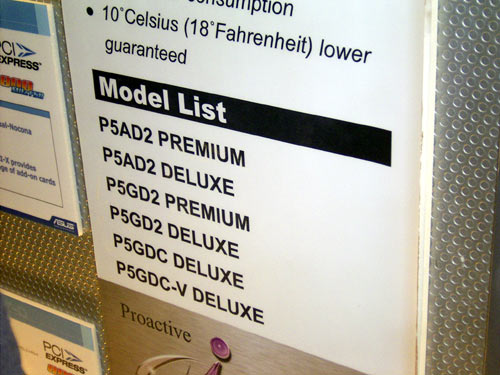
As we see, all the board names are absolutely unknown. To put the impressions from the large number of models in order, let's bring in the following table:

As is seen from the table, boards P5AD Premium/Deluxe rank higher since they are built on the Intel 925X chipset.
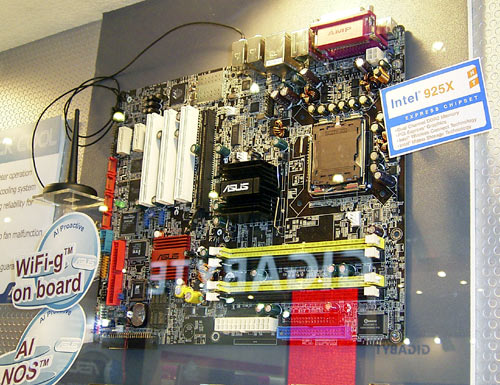
In practice, this results in higher performance level (due to the PAT technology). Along with these, the Intel 925X chipset theoretically differs from i925 (even more from i915P) in the support of the speedier system bus (1066 MHz). However, all the materials state that supported are processors with the maximum bus speed = 800 MHz. Evidently, announcement of support for the 1066 MHz bus takes place after the relevant statement by Intel.
There are two more boards of interest - P5GDC Deluxe and P5GD1 (both based on the i915P chipset). The specific feature of P5GDC Deluxe is simultaneous support for both DDR and DDR2 memory.
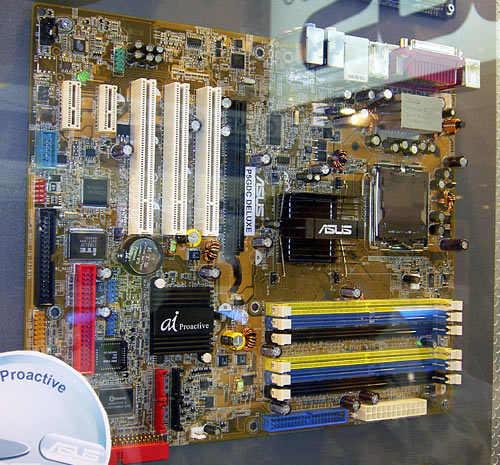
Note the number of DIMM slots - as many as six.
As regards the P5GD1 board, it is ideal for users who use high-quality DDR memory and intend to use it with LGA775 processor.
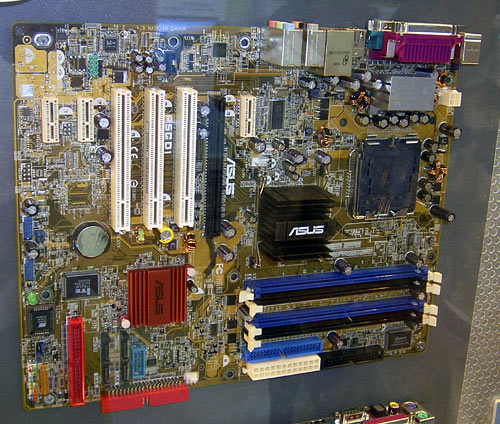
Besides Intel systems, boards for various Athlon64 processors were found at the company expo stand. Of most interest is the A8V Deluxe motherboard built on the VIA K8T800Pro chipset plus VT8273 with the most promising Socket939.
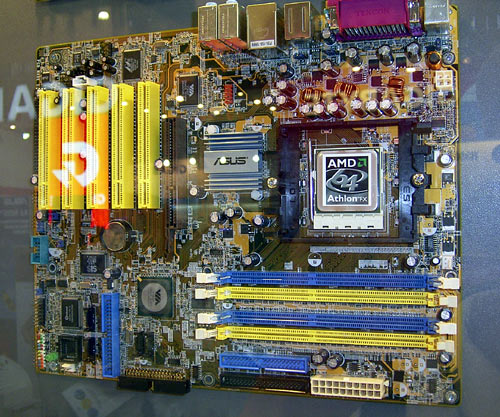
Another motherboard for the Socket939 is A8N-E Deluxe based on the nVidia CK804 chipset. But Socket 939 motherboards will become more attractive once the relevant processors hit the retail in mass quantities (preferably at affordable prices). For now, there are only Socket 754 processors on the market. For these processors, Asus released the K8N-E (DELUXE) motherboard built on the nForce3 250 chipset.
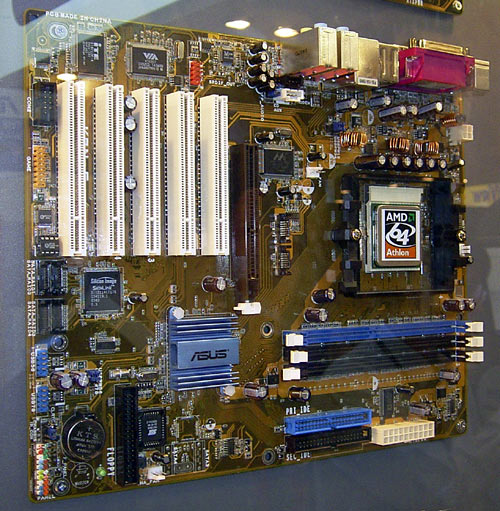
Apart from motherboards, almost all the produce assortment was presented at the expo. In particular, let's look at the photos of two most attractive barebone systems:
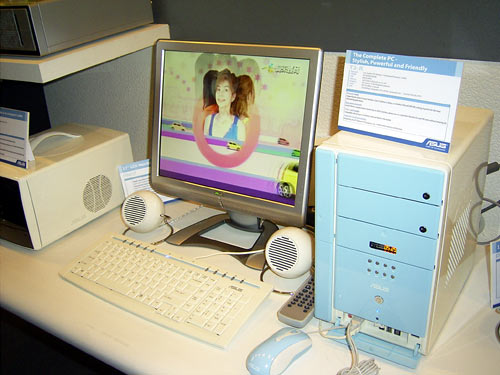
the T2-R model assembled with a motherboard on the ATI RS300 chipset + IXP200,
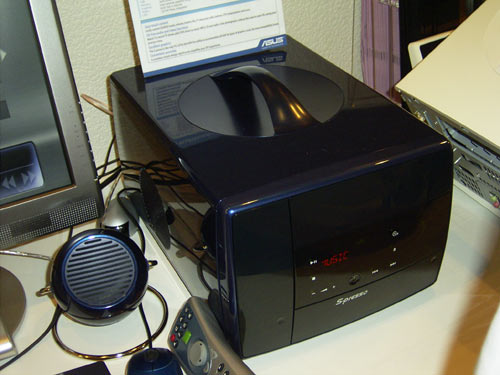
and the S-presso model using a motherboard on the i865G chipset +ICH5.
Note that the barebone systems are at the expo with LCD monitors manufactured by Asus itself.

The fast emergence of the company on the LCD monitor market can be explained by that Asus was provident and acquired an ECS factory operating in the respective field. What's more, production lines were upgraded, and now the company representatives can boast shorter response times in these monitors - merely 16 ms.
We finally got round to coolers. That is the smallest and the most noisy computer component. But this specimen disproves each of the statements.
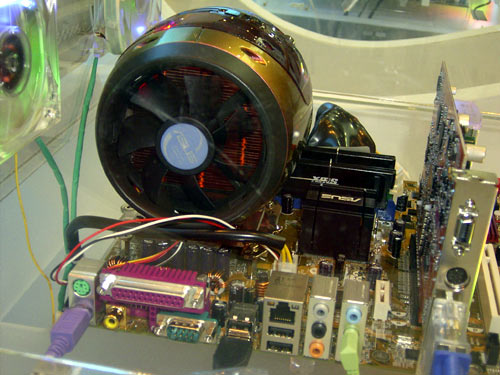
One more photo on the side:
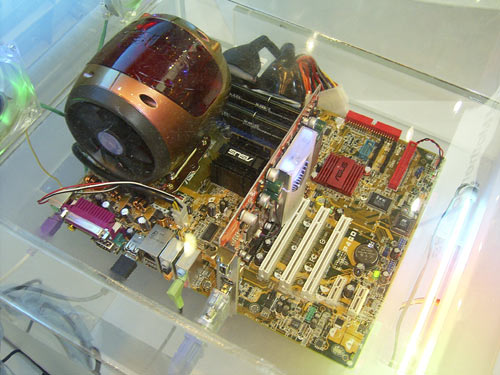
 |
Content: |
 |
|
 |
Top Stories: |
 |
 |
 |
MoBo:


|
 |
 |
 |
VGA Card:


|
 |
 |
 |
CPU & Memory:

|
|
|
